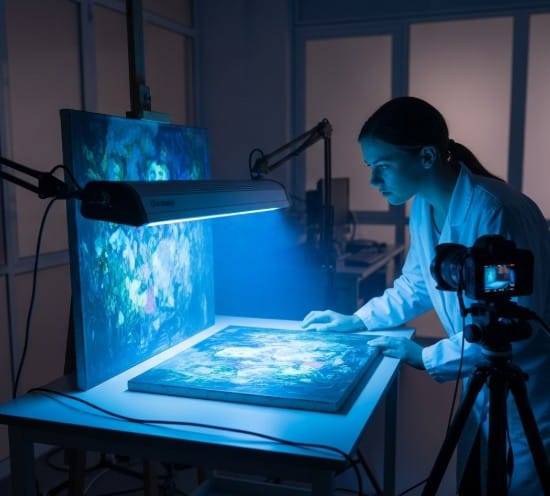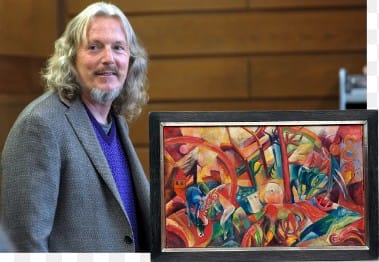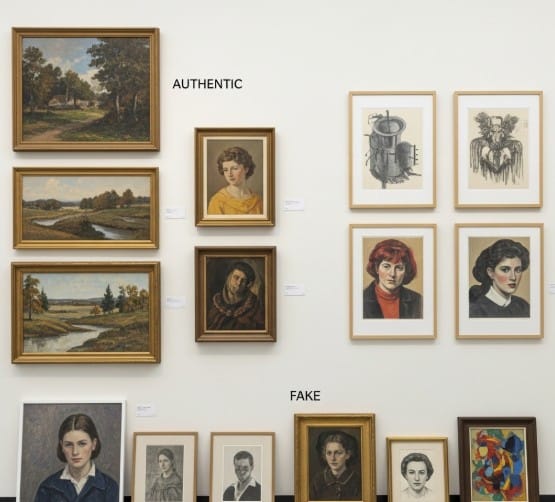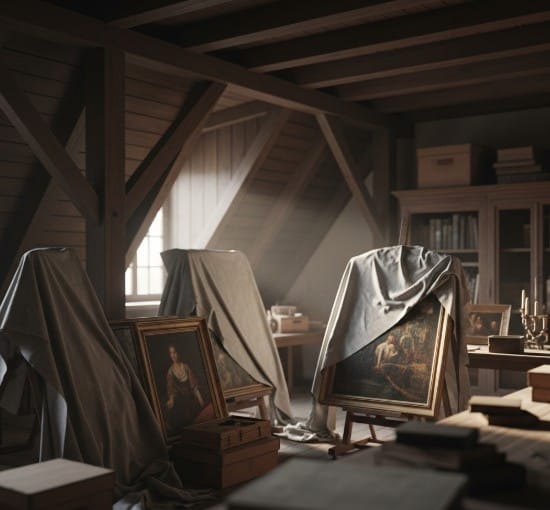Famous Art Forgeries That Fooled the World (And Their Prices)
Introduction
The world of art is not just about creativity and beauty—it’s also about value, prestige, and history. Where there is great value, there is also great deception. Throughout history, famous art forgeries have infiltrated the collections of top museums, fooled expert appraisers, and been sold for millions. These meticulously crafted deceptions are more than just copies; they are elaborate hoaxes that challenge the very essence of authenticity and authorship.
In this blog post, we dive deep into the most infamous art forgeries that fooled the world, reveal how much they sold for, and explore the psychological and financial impacts these fakes have left on the global art community.

The Allure and Consequences of Art Forgery
Art forgery isn’t just criminal—it’s theatrical. Forgers are often artists themselves, capable of copying styles with incredible precision. Their motivations vary: financial desperation, revenge against the art establishment, or simply the thrill of deception.
Why do art forgeries succeed?
- Visual similarity: Most forgeries are good enough to fool the eye.
- Expert overconfidence: Even seasoned curators have been duped.
- Authentication gaps: Provenance can be faked or lost.
- Market pressure: Demand for rare works drives collectors to take risks.
1. Han van Meegeren and the Fake Vermeers
Perhaps the most legendary forger in history, Han van Meegeren successfully fooled the entire art world by forging works in the style of Dutch master Johannes Vermeer.
- He sold The Supper at Emmaus for the equivalent of $6 million in today’s money.
- Even the Nazis were duped: Hermann Göring bought one of his forgeries.
Van Meegeren was arrested for collaborating with the Nazis, only to prove his innocence by revealing he painted the fake himself. The world was stunned.
2. Elmyr de Hory: The Man of a Thousand Masters
Elmyr de Hory claimed to have forged over 1,000 artworks in the style of Matisse, Picasso, Modigliani, and more.
- His fakes were sold through reputable galleries across Europe and the US.
- Many fetched prices upwards of $50,000 to $200,000 each.
His life inspired the Orson Welles documentary F for Fake and exposed the fragility of art authentication processes.
🔗 Read more about Elmyr de Hory on The Art Newspaper
3. Wolfgang Beltracchi: Master of the Invented Provenance
Beltracchi created paintings in the style of Max Ernst, Heinrich Campendonk, and Fernand Léger, complete with forged labels, documents, and gallery stamps.
- His forgeries sold for over $45 million in total.
- One single forged Max Ernst sold for $7 million.
Beltracchi was eventually caught due to a modern pigment (titanium white) found in one painting supposedly from 1914. He served a prison sentence and now paints under his own name.

4. Pei-Shen Qian and the Knoedler Scandal
Chinese artist Pei-Shen Qian created forgeries in his Queens, NY garage that were sold through the prestigious Knoedler Gallery.
- Over 60 fakes attributed to Rothko, Pollock, and others were sold.
- Total value: over $80 million.
This scandal rocked the American art market and led to the downfall of one of the oldest galleries in the U.S.
5. John Myatt and the ‘Genuine Fakes’
British forger John Myatt teamed up with conman John Drewe to sell over 200 fake works as authentic pieces by Giacometti, Chagall, and others.
- Myatt’s forgeries sold for up to £200,000.
- Drewe went as far as planting fake provenance in major museum archives.
Today, Myatt paints openly and sells his “genuine fakes” as tributes to famous styles—this time, legally.
How Much Have Famous Forgeries Cost the Art World?
Art forgeries have cost hundreds of millions in financial losses, not including the intangible damage to reputations, museum credibility, and public trust.
| Forger | Estimated Damage |
|---|---|
| Wolfgang Beltracchi | $45 million+ |
| Knoedler Scandal | $80 million |
| Han van Meegeren | $6 million+ (adjusted) |
| Elmyr de Hory | Unknown, likely millions |
| John Myatt | ~£20 million |

The Psychology Behind Art Forgery
What drives someone to fake a masterpiece? Often, it’s not just money. Many forgers speak of revenge, lack of recognition, or the thrill of proving experts wrong.
- Han van Meegeren wanted to embarrass critics who dismissed his original work.
- Beltracchi enjoyed tricking elite collectors and curators.
- Myatt claimed he just needed money and didn’t expect to fool the world.
There’s an element of performance art in forgery—a secret story written behind the brushstrokes.
Detecting Fakes: The Modern Tools of Authentication
Today, forensic science plays a critical role in uncovering forgeries.
Techniques include:
- Carbon dating and x-ray analysis
- Pigment and fiber analysis
- Provenance verification
- AI-driven style recognition
Despite these advances, the art world still relies heavily on expert opinion, which has been shown to be vulnerable.
The Impact on Museums and Collectors
Forgeries that enter major collections can shake the foundations of trust and expertise.
- Museums face embarrassment and legal challenges.
- Collectors may lose millions with little legal recourse.
- Auction houses have tightened vetting, but risk remains.
Some museums now display famous forgeries alongside originals as cautionary tales, turning shame into educational storytelling.

What Collectors and Buyers Can Do
- Always request full provenance
- Consult multiple experts before major purchases
- Use forensic testing for high-value works
- Be wary of deals that seem too good to be true
At ISKUSS, we emphasize transparency and heritage. All our pieces are curated with origin and cultural context, promoting ethical collecting and authentic expression.
Conclusion
The world of famous art forgeries is a blend of drama, deception, and irony. These stories challenge our assumptions about value, truth, and expertise in the art world. While forgeries may momentarily deceive, their exposure often teaches powerful lessons about human psychology, market dynamics, and the ever-evolving definition of art itself.
As we continue to treasure authenticity, we must also remain vigilant. Because sometimes, the most beautiful masterpiece isn’t what it appears to be.

